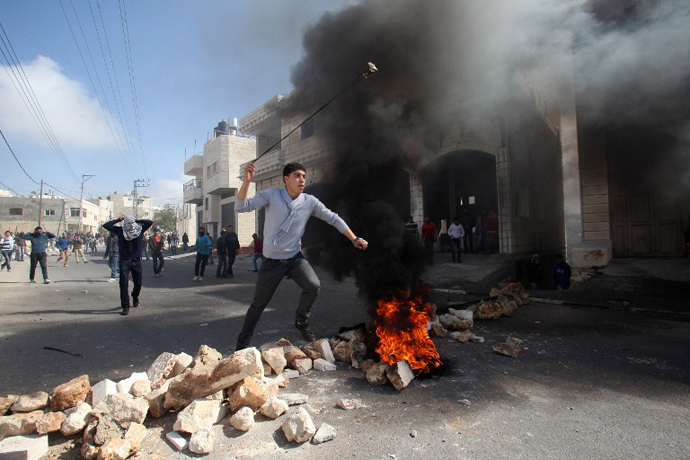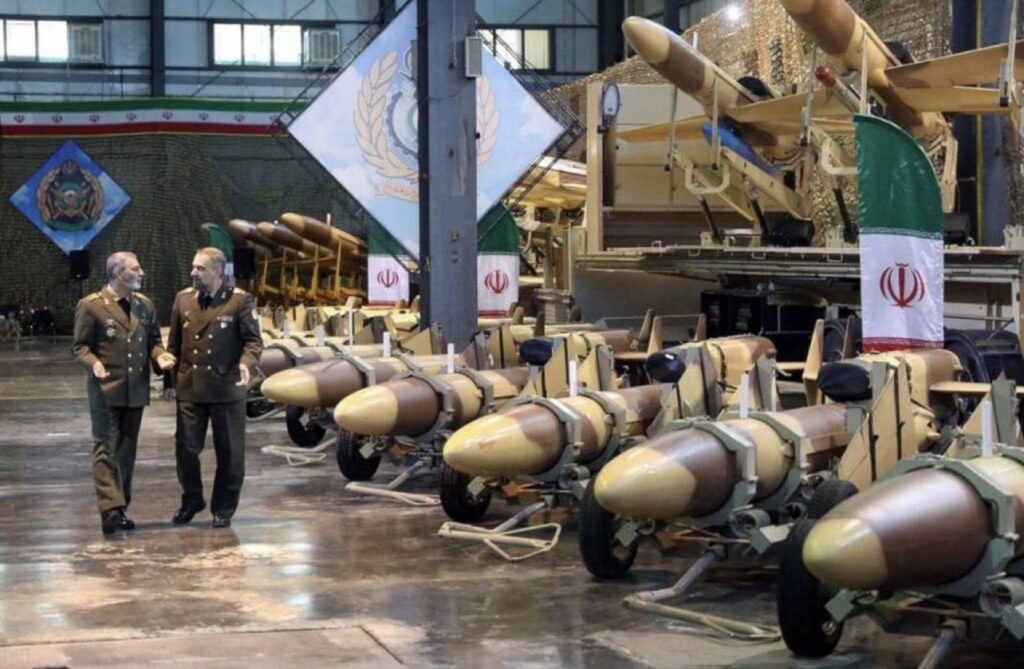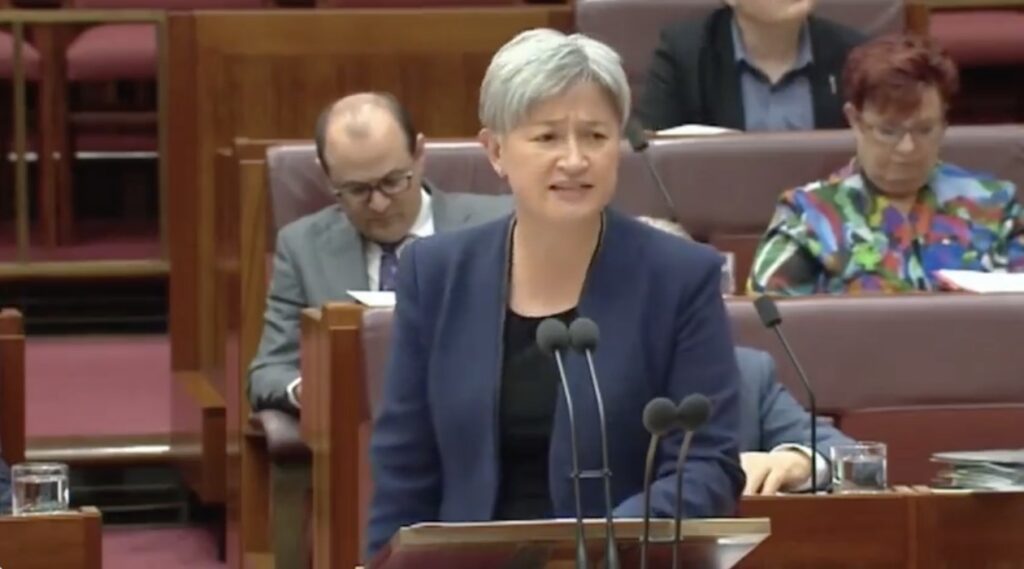UPDATES
West Bank Unrest
Feb 27, 2013

Update from AIJAC
February 27, 2013
Number 02/13 #06
This Update features three pieces providing background to the growing – though still limited – West Bank demonstrations. While presented by Australian media as primarily the result of the death in Israeli custody of Arafat Jaradat on Saturday, and Palestinian claims he was tortured, this ignores the fact that demonstrations were already escalating last week, amid PA calls for the release of prisoners and threats of a new “Intifada”. As all three of the pieces in this Update make clear, the death of Arafat Jaradat has simply become the latest justification for a campaign of demonstrations already being encouraged by the Palestinian Authority.
First up is top Israeli security affairs journalist Ron Ben Yishai, who says that the demonstrations are being orchestrated by the Palestinian Authority to call attention to their demands prior to Obama’s visit and to allow them to attempt to compete with Hamas for Palestinian support. He also points out that matters are still limited in scale, involving mostly relatively few villages near Hebron, and that, given new Israeli methods for avoiding civilian casualties and severe injuries to the demonstrators, there is a good chance to keep these events limited in scope, CLICK HERE.
Next up is noted Palestinian Affairs writer Khaled Abu Toameh exploring the PA’s motivation for ramping up demonstrations – in a piece written before Jaradat’s death. He predicts the demonstrations to ramp up further as Obama’s visit approaches in an effort to get the US President to pressure Israel to make concessions, and that Obama’s planned West Bank visit may also be accompanied by orchestrated demonstations against supposed US favouritism toward Israel. For Abu Toameh’s extremely well-informed analysis of the PA strategy, CLICK HERE.
Finally, The Times of Israel interviewed a number of experts to gain their perspective on the unrest and PA involvement. Main interviewee and Israeli academic specialist on Palestinian politics Hillel Frisch says the current unrest “is a highly planned, top-down mobilization” by the PA. He, and another expert, former Defence Ministry advisor Shalom Harari, concur that one key goal of the PA is to provide a substitute for the Hamas-Fatah reconciliation that most Palestinians want, but that has proved impossible to achieve. For the analysis of Frisch, Hariri and others in full, CLICK HERE. More on the past history of similar Palestinian efforts and current geopolitics for Obama comes from Jonathan Tobin.
Readers may also be interested in:
- The Jerusalem Post editorialised on the West Bank situation, calling on PA President Abbas to pull back from his current risky strategy of escalation. A similar call comes from Israeli columnist Dan Margalit.
- More information on the main Palestinian hunger striker in prison – convicted terrorist Samer Issawi.
- The International Atomic Energy Agency releases a new concerning report on the Iranian nuclear program, while Iran begins installing new, faster and more efficient centrifuges. Meanwhile, new evidence emerges that Iran has activated an additional track to nuclear weapons, via plutonium rather than uranium.
- Israeli successfully tests the new Arrow 3 medium range missile defence system. Some analysis of the new system’s capabilities and its strategic implications comes from Israeli rocket researcher Tal Inbar.
- Isi Leibler writes critically about Israeli PM Netanyahu’s tactics in pursuing a new governing coalition.
- Some examples from the many stories and comments now appearing at AIJAC’s daily “Fresh AIR” blog:
- Or Avi-Guy reveals more details about the findings of an Israeli court’s investigation into the death in prison of Australian-Israeli Ben Zygier in 2010.
- Sharyn Mittelman writes about the escalating violence against Egyptian women, and the efforts by Egyptian lawmakers to blame the women themselves for their plight.
Unrest may lead to uprising
Analysis: Abbas looking to create explosive situation that will force Netanyahu, Obama to discuss PA’s demands
Ron Ben Yishai
Ynet.com 02.25.13, 12:15
The current unrest in the territories is being orchestrated, to a large extent, by the Palestinian Authority. One of the reasons for this unrest is the weeks-long prisoners’ strike, under the guidance of Fatah. If a prisoner dies in an Israeli jail, the masses take to the streets. But it would be a mistake to think that it is only the PA’s initiative that motivates the masses. As was the case in most uprisings in recent years, there are a number of reasons for the Palestinian unrest.
The first is the dire economic situation in the territories, which affects not only young, unemployed people, but also Palestinian police, who have not received their salaries and are therefore not present on the ground to restrain the masses. It is important to note in this respect that the Israeli government is largely responsible for the PA’s dire economic situation, as it has refused to transfer tax revenues to the PA after Abbas asked the UN to recognize the PA as a state.
Another reason for the mounting tensions is Hamas’ success in the aftermath of Operation Pillar of Defense. Hamas’ propaganda presents the Israeli concessions in the framework of the agreement that ended the conflict as a great achievement of the armed resistance. Fatah, which calls for non-violent resistance, also hears the statements coming out of Gaza. Meanwhile, the frustration in the West Bank is growing due to the fact that the PA and Hamas have yet to reconcile.
Fatah, which is the Palestinian Authority’s political base, fears losing its dominance over the West Bank, so it must appear to be just as militant as Hamas in Gaza. The way to do this is to launch an intifada without the use of live ammo or explosives. Such an uprising is meant to allow the Palestinians to gain diplomatic achievements without losing the world’s sympathy as a result of the murder of Israelis.
There is another important reason for the unrest: The acts that are referred to in Israel as “price tag” are actually nationalistic crimes. This is also how the government defines acts perpetrated by Jewish extremists and terrorists. The frequent clashes between Jews residing in West Bank outposts and Palestinians also add to the already tense atmosphere – perhaps even more.
The reason the unrest has intensified recently is that the Palestinians want to create an explosive situation ahead of President Obama’s upcoming visit to the region. Abbas and Jibril Rajoub did not invent anything here. In the 1970s Henry Kissinger developed a theory according to which international agreements are easier to reach in a tense atmosphere. Kissinger implemented this theory when he served as national security advisor and secretary of state in the Nixon administration, when agreements were needed to end the Yom Kippur War. He had a fair amount of success, and now Abbas is interested in making a similar move aimed at creating an atmosphere that will force Netanyahu and Obama to discuss the Palestinian demands –even if they do not plan on getting actual results.
Through this “quiet intifada,” Abbas is looking to force Obama and Netanyahu to creating an outline for the peace process that is more or less acceptable to the PA. The plan will be implemented by new Secretary of State Kerry.
This is more or less the story behind the current unrest and why the masses will take to the streets again today (Monday), despite the fact that a Palestinian representative was present during the autopsy performed on the body of Arafat Jaradat, the prisoner who died in Megiddo Prison. It is safe to assume that Abbas, like the Israeli government, fears that things will get out of control, because he also views the masses as a potential danger.
It is clear that Abbas and his aides do not want a violent and lethal intifada. The memories of the second intifada are restraining the street, and this is why most of the rioters are young people who were babies or children during the second intifada. Most of those who remember the events that transpired at the beginning of the millennium are not rushing to the streets.
The Israeli government realizes that the punitive measures it took against the PA in response to the UN bid further isolated it from the international community and gave the Palestinians a propaganda weapon in the international arena. These measures also made it easier for the PA to incite the Palestinian public in the West Bank. Those who will suffer most from the unrest are the Jewish settlers throughout the West Bank, as well as the IDF soldiers and Border Guard officers who sustain the stone and Molotov cocktail salvos.
For now, this is not an intifada. The unrest has yet to develop into a popular uprising and does not have the characteristics of the first and second intifadas. There is no single command center that coordinates the maneuvers on the ground, and there is no widespread use of violent means. So far, the violent acts have occurred in a few villages and in Hebron – but not in Nablus, Ramallah or east Jerusalem.
However, today’s unrest may turn into tomorrow’s uprising. The IDF and Border Guard are much better prepared than they were in 1987 and 2000 to effectively deal with the rioters. They have developed methods aimed at avoiding civilian casualties and severe injuries to the demonstrators, thus reducing the likelihood that these protests will “explode” like the demonstrations that ignited the first and second intifadas. Let’s hope the IDF’s policy of restraint will prevent a “third initifada.”
Back to Top
————————————————————————
Palestinians Plan Violence to Force the US to Extract Concessions from Israel
by Khaled Abu Toameh
Gatestone Institute, February 22, 2013 at 5:00 am
The Palestinian leadership is hoping that anti-US demonstrations and uprisings will scare Obama and force him to exert even more pressure on Israel.
There are many signs that the Palestinian Authority is seeking to escalate tensions in the West Bank ahead of US President Barack Obama’s visit to the region next month.
Although the Palestinian Authority probably does not want an all-out confrontation between Palestinians and Israelis at this stage, some Palestinian Authority officials in Ramallah believe that a “mini-intifada” would serve the Palestinians’ interests, especially on the eve of Obama’s visit.
The officials hope that scenes of daily clashes between Israeli soldiers and Palestinians in the West Bank will prompt Obama to exert pressure on the Israeli government to make far-reaching concessions to the Palestinian Authority.
This is why the Palestinian Authority leadership has been encouraging its constituents lately to wage a “popular intifada” against Israel, each time finding another excuse to initiate confrontations between Palestinians and Israel.
Now the Palestinian Authority is using the issue of Palestinian prisoners who are on hunger strike in Israeli prisons as an excuse to call for street protests and clashes with the Israel Defense Forces.
In recent days, dozens of Palestinian protesters have been injured in clashes with IDF soldiers in various parts of the West Bank. The protests are being held in solidarity with four hunger-strikers.
Before that, the Palestinian Authority used the issue of settlements as an accuse to call for widespread protests in the West Bank.
Before that, the Palestinian Authority leadership encouraged Palestinians to protest against Israeli “plans” to destroy the Aqsa Mosque and replace it with the Third Temple.
By encouraging a “popular intifada,” the Palestinian Authority leadership is hoping to bring the Palestinian issue back to the top of the agenda of the US Administration and Israel.
Palestinian Authority officials have in recent months expressed concern over the lack of interest in the Palestinian issue both in the US and Israel.
The Palestinians have been absent from speeches delivered by Obama over the past few months, and the majority of parties that ran in the last Israeli elections did not even mention the Palestinian issue.
But now that all eyes are once again turned toward the Middle East in anticipation of Obama’s planned visit, the Palestinian Authority is working hard to draw the world’s attention to the Palestinian issue, and hoping to achieve its goal by encouraging clashes between Palestinian protesters and the IDF and Jewish settlers in the West Bank.
Although the violence has thus far remained on a low flame, it is expected to intensify as the date of Obama’s visit approaches.
The belief in the Palestinian Authority is that the violence on the ground will push Obama to exert pressure on the Israeli government to comply with the Palestinian conditions for resuming the peace process, namely a full cessation of settlement construction and the release of Palestinian prisoners from Israeli jails.
There is also talk in Ramallah about organizing demonstrations during Obama’s visit to the West Bank, where he is scheduled to meet with President Mahmoud Abbas. The demonstrations will be held to protest against US “bias” in favor of Israel.
The Palestinian Authority leadership is hoping that the anti-US protests will scare Obama and force him to exert even more pressure on Israel.
The Palestinian Authority’s message to Obama: You must act quickly against Israel before things get out of hand.
It now remains to be seen whether Obama is aware of this attempt to put pressure on him, or whether he will continue to turn a blind eye to the Palestinian Authority’s new-old tactic of initiating an escalation with the hope of extracting concessions from the US and Israel.
Back to Top
————————————————————————
Analysis – Israeli experts see a guiding hand behind the escalating West Bank demonstrations
Prisoner protests mark PA effort to start a ‘popular intifada’
By Elhanan Miller
Times of Israel, February 21, 2013, 7:28 pm
Stalled on the Hamas reconciliation front and with no money, the PA needs public mobilization to generate a semblance of unity and deter a more violent shift
With little prospect of success on the reconciliation front with Hamas, and on the verge of bankruptcy, the Palestinian Authority has been instrumental in orchestrating the escalating series of popular demonstrations in recent weeks, held in solidarity with Palestinian prisoners in Israeli jails.
According to one Israeli expert, the aim is to provoke a First Intifada-style popular uprising. “The PA is playing a double game,” said Hillel Frisch, who researches Palestinian politics at Bar-Ilan University’s BESA Center. “With regards to battling Hamas, there’s coordination if not cooperation with Israel. But on the political front, the PA is trying to generate a popular intifada.”
The largest of the demonstrations, which have been building up steam in recent weeks, took place Thursday, when thousands of Palestinians demonstrated at the Beitunia military checkpoint near the Ofer Prison outside Ramallah.
Samer Issawi, who was sentenced to 26 years in prison for attempted murder and other crimes (he opened fire with an AK47 at an Israeli bus, fired at an Israeli car, and manufactured pipe bombs used in terror attacks) before being released as part of the Gilad Shalit prisoner swap in 2011, has been on hunger strike at the jail for over 200 days. He is protesting his re-arrest by Israel, which claims he violated his terms of release (reportedly by leaving the Jerusalem area when barred from doing so). Issawi was sentenced to eight months in jail on Thursday; with time served, he is now slated to be freed next month — if he lives that long.
The most iconic of the four Palestinians on hunger strike, Issawi announced on Thursday that he had stopped drinking water; he has made similar announcements in past days too. He prepared the public for his death, demanding that “the occupation” not carry out an autopsy on him, and requesting that he be buried next to his brother.
The PA, facing mounting public pressure for its failure to produce tangible results in reconciliation talks with Hamas, and consistently unable to pay government employee salaries, has endorsed the public protest movement and encouraged it through active government participation.
On Wednesday, Prime Minister Salam Fayyad took part in a solidarity demonstration organized by the Ministry of Prisoner Affairs in El-Bireh, outside Ramallah, and accused Israel of placing the lives of the four men in jeopardy.
“The prisoner issue is an individual issue concerning every Palestinian. There is no Palestinian family without a member who has been arrested or imprisoned,” Fayyad said, calling the matter one of “national consensus.”
Minister of Prisoner Affairs Issa Qaraqe was less diplomatic on Wednesday, when he claimed that Israel was deliberately attempting to kill the hunger strikers.
The BESA Center’s Frisch said the PA’s involvement in the protest movement stems from an effort to avoid another armed intifada in the West Bank.
“The PA is incessantly searching for issues to mobilize the public,” Frisch said, without a resort to Second Intifada-style terrorism. “If it weren’t prisoners, the PA would find another issue. This is a highly planned, top-down mobilization.”
Frisch said the need to replace the armed struggle with a different — in this case relatively more benign — form of mobilization is known in academic literature as “the substitution effect.”
“Suicide attacks are too costly for Palestinian society, so the ‘resistance’ takes the form of rocket launches from the Gaza Strip, or nonviolent protests in the West Bank,” Frisch said.
But on Thursday, “nonviolent” seemed to be a relative term.
At the protest outside Ofer Prison, Palestinian demonstrators hurled stones at security forces and burned tires. One Israeli journalist was injured at the scene and taken to hospital.
PA President Mahmoud Abbas has praised the protests and Issawi’s hunger strike, calling them “an honorable example of our people’s struggle for freedom and independence.”
Yet, Frisch said, the protest movement lacks two essential components for success: an effective organizational framework and middle-ranking commanders. During the Second Intifada, with its relentless onslaught of suicide bombings at Israeli targets, Israel arrested 60-70 key field commanders belonging to all Palestinian factions, and decimated Fatah’s operational structures: the Tanzim and the Shabiba, or youth organization.
“”Violence can flare,” Frisch said, “but without organization and middle command it won’t persist.”
Shalom Harari, a former adviser on Arab affairs at Israel’s Defense Ministry, concurred with Frisch. With Palestinian reconciliation stuck due to conflicting ideologies and power struggles between Fatah and Hamas, Harari said, the PA is attempting to construct a “reconciliation substitute” on the grassroots level.
But the protests don’t only serve a domestic purpose, Harari added. The demonstrations also constituted an orchestrated attempt by the PA to fill “garbage time,” ahead of US President Barack Obama’s trip to the Middle East and the formation of a new Israeli government.
“The Arab World and the West are beginning to forget the Palestinian issue,” Harari said. “So the PA has decided to employ a policy of ‘soft violence,’ which isn’t necessarily so soft.”
Kadoura Fares, head of the Palestinian prisoner’s club, denied that the protest movement was anything but a popular expression of public outrage.
“The PA is neither supporting nor preventing the protests,” Fares said. “At this point, it can barely prevent its own collapse, so how can it direct this matter?”
Fares said that the protests erupted spontaneously when the Palestinian public realized that Arab and international pressure on Israel to release the prisoners bore no fruit. When Israel negotiated with Egypt and Hamas for the release of over 1,000 Palestinian prisoners in return for abducted soldier Gilad Shalit, it was already planning to re-arrest a number of them, Fares claimed.
Israel has re-arrested 14 Palestinian prisoners, released as part of the Shalit deal in October 2011, for alleged violations.
“If Israel were to re-arrest the prisoners under court order for a real violation, there would be no protest,” Fares said. “But Israel refuses to disclose why they were arrested, and uses military orders. This is not a legal matter, but a purely political decision.”
Tags: Israel











